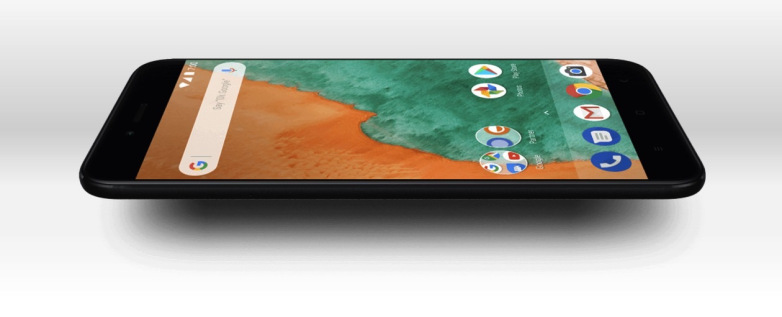When we first heard about the Xiaomi partnering with Google, the first thing that came to our mind is “wow”. Affordable high-quality hardware with stock Android user experience is every Android fanboy’s dream.
It’s really difficult to start with this smartphone for the following reasons. The device has the best build quality compared to all the other Xiaomi smartphones in India. Xiaomi has done everything right when it comes to design and aesthetics. The device is carved out of single block of Aluminum with top-not CNC craftsmanship.
In terms of display, the device offers standard 5.5-inch 1080p IPS LCD screen protected by 2.5D curved Corning Gorilla Glass (unknown generation). Under the hood, the Qualcomm Snapdragon 625 (used in Redmi Note 4, Mi MAX 2) powers Xiaomi Mi A1 Android One as well. The smartphone offers 4 GB LPDDR3 RAM with 64 GB onboard flash storage with a Hybrid SIM card slot which can accept micro SD card up to 256 GB. For the first time, the Android One branded smartphone features capacitive navigation keys instead of on-screen navigation keys, which makes it one of a kind.
Xiaomi India bragged a lot about the camera capabilities of the Xiaomi Mi A1 Android One, in fact, they went a step ahead and compared the camera samples with other dual-camera smartphones available in the market. In fact, according to their presentation, the device outperforms the camera of Apple iPhone 7 Plus and OnePlus 5. However, in the real world scenario, the device doesn’t come close to those flagship cameras. However, at the price tag of INR 14,999, this is the best camera module. The dual 12 MP cameras do offer 2X optical zoom and 4K video recording capability with live bokeh mode. However, like the premium models, the device doesn’t offer optical image stabilisation or electronic image stabilisation. So, don’t expect the video footage to shake free.
The main camera does offer best quality images in the ambient lighting condition and daylight. However, the device struggles to capture details and colour accuracy in the low lighting or artificial lighting condition. The 5 MP selfie camera does offer 1080p video recording capability with standard Xiaomi features like Beauty mode for the enhanced selfies.
The software department on the Xiaomi Mi A1 is taken care by Google, so expect timely Android updates. Presently, the device runs on Android Nougat 7.1.2 stock Android UI with expected Android Oreo update by the end of 2017. So, when the time comes, this will be the first Android smartphone to get Android P update as well (confirmed by Google Android Chief engineer).
In terms of connectivity concerns, the device offers dual Hybrid SIM card slot with 4G LTE and VoLte capability on both the slots. The battery capacity is on the Xiaomi Mi A1 Android One is a bit less compared to Redmi Note 4 (features 4000 mAh), the Mi A1 comes with a 3080 mAh battery with fast charging capability with fast charging capability (up to 10W) via micro USB port with USB OTG support. It looks like Google and Xiaomi have made many software changes to get a complete day of usage on a single charge.
Conclusion: The Xiaomi Mi A1 offers a great set of specifications for the price tag. If you are looking for a well build a smartphone with futuristic updates and faster software updates, then this is a tailor-made device for you. There are other dual-camera smartphones like Lenovo K8 Note, Moto G5S Plus with the similar stock Android experience, but they have their own disadvantages over the Mi A1. Ex: the above-mentioned phones feature micro USB, and the dual-camera implementation is not as good as the Xiaomi Mi A1. As the software updates are controlled by Lenovo and Moto, the device might not get faster Android updates like the Xiaomi Mi A1.


